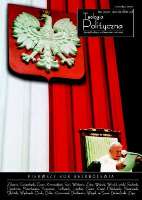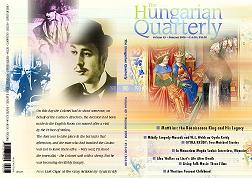
John Paul II and the Priority of Culture
Jan Paweł II i prymat kultury
Keywords: culture; Pope; John Paul II; Church;
More...
Keywords: culture; Pope; John Paul II; Church;
More...
Keywords: Poles; Pope; research; society; Generation
More...
Keywords: books; literature; Pope; John Paul II;
More...
Keywords: feeedom; Pope; John Paul II; truth; Church; law
More...
Keywords: Pope; Europe; Christianity; God; constitution; Church; Poland
More...
Keywords: Pope; Poles; Church; Society; Media;
More...
Keywords: human right; Pope; law; God
More...
Keywords: John Paul II; Warsaw; uprising; Wojtyla; Pope;
More...
Keywords: Pope; John Paul II; politics; Poland; freedom; Europe;
More...
The arrival and presence of the Italian Renaissance in Hungary is, to this day, associated in the popular mind with King Matthias. Scholars, whether Hungarian or not, are also in agreement. Yet the Italian Renaissance did not come to the royal court in Buda entirely without precursors. Here we should advert to less wellknown art objects rather than the early emergence of humanism in Hungary through Matthias Corvinus’s tutor, Bishop János Vitéz, and his nephew, Janus Pannonius, the latter being an important poet writing in Latin, who had received much of his schooling in Italy. Vitéz was not just a passionate reader of the writers of antiquity: he also commissioned splendid manuscripts from Florence. The Livy codices now in the Bavarian Staatsbibliothek, Munich, are among the finest extant examples of the kind of decoration with white interlaces called “bianchi girari”. Vitéz initiated much construction in Esztergom, his archiepiscopal seat (although not a trace of the Renaissance style is to be found in his own palace). There are, however, early traces of the Renaissance in the environs of other cultivated Hungarian prelates. It was certainly not mere chance that the first clearly carved roman lettering (otherwise known as Humanist capitals) known to us are in Veszprém, and specifically in the Gothic chapel built by Bishop Albert Vetési, in 1467. Prelates who had visited Italy there acquired objects of art and books and invited master craftsmen to Hungary, independently of Matthias and the royal court.
More...
Matthias Corvinus’s reign (1458–90) has long fascinated historians. Along with the prehistory of the Magyars (before they took possession of historical Hungary in 896) and the early Hungarian kingdom during the reign of the Árpád kings (1000–1301), this is the most extensively researched period in the country’s history. What follows will make no attempt to sum up the whole of Matthias’s reign but will engage with a few of the more problematic aspects. Matthias Corvinus came to the Hungarian throne 550 years ago, in 1458. The most illustrious of all the country’s monarchs in the late Middle Ages, he reigned for thirty-two years, until 1490. He was not a member of a princely family: his father, John (1407–56), was the son of a Transylvanian lesser noble who, thanks to his outstanding talents as a warrior and statesman under Sigismund of Luxembourg2, had risen to the position of Voivode of Transylvania (1441–56) and later Regent (1446–53) of Hungary. Incidentally, in Bohemia the estates had shortly before, in the same year of 1458, elected to the kingship George of Podiebrad (1420–71), another nobleman who was not of royal blood. Matthias was elected to the throne at the age of fifteen, when he was a prisoner of George of Podiebrad in Prague, and he had to be ransomed by his mother, Erzsébet Szilágyi. By then Hungary had been in a state of almost unbroken civil war since 1440. Matthias temporarily put a halt to Ottoman expansion in Bosnia; the first ten years of his reign saw him engaged in bitter combat with the Turks, but he developed more peaceful relations with the Sultan, concluded with a treaty in the last decade of his reign.[...]
More...
Anna Porter: The Storyteller—A Memoir of Secrets, Magic and Lies. Vancouver/Toronto, Douglas & McIntyre, 2006, 385 pp.
More...

Keywords: Franz Liszt
An Interview with Alan Walker
More...
Dubravko Lovrenovic´: Na klizisˇtu povijesti (sveta kruna ugarska i sveta kruna bosanska 1387–1463) (The Landslide of History: The Holy Crown of Hungary and the Holy Crown of Bosnia 1387–1463). Zagreb-Sarajevo, Synopsis, 2006, 808 pp.
More...
An unknown poet composed these verses after the death of Matthias Corvinus (1490). Even at this early date it records all the qualities that were to live on in popular belief for several centuries as the particular attributes and principal merits of the great king.
More...

György Szomjas: Vagabond • Csaba Bereczki: Életek éneke (The Song of Lives) • András Péterffy: Brassói pályaudvar (Bras¸ov Railway Station)
More...
I’ve often wondered what would happen were Hungary to slip off the face of the Earth from one day to the next. Would anyone care? Who’d mourn, who’d rejoice? What would the world stand to lose or gain from such an odd cataclysm? In Brueghel’s famous painting, The Fall of Icarus, Icarus has fallen from high above and only his feet are popping out of the sea. Yet no one on the shore notices. Blithely, fishermen continue to fish, the shepherd drives his flock, the farmer ploughs his land. Many would take note of Hungary’s fall, but what would they think?[...]
More...